Содержание
- 2. What are business cycles? Perhaps, you know something from the introductory level… The business cycles occur
- 3. Phases of business cycles In other words, Business Cycles are alternating periods of economic expansion and
- 4. Business cycles graphically… Potential output Actual output Business cycles are the irregular expansions and contractions in
- 5. Business cycles and unemployment dynamics Recessions cause the unemployment rate to increase. We should remember about
- 6. The most important recent recessions 1974/75: Oil price shock caused by OPEC. 1982/83: High real wages
- 7. How to explain business cycles? ?
- 8. The multiplier-accelerator model as the oldest formalized model of cycle Initial points The model is a
- 9. What is the accelerator? Firms need a given quantity of capital to produce the current level
- 10. About constancy of the capital-output ratio If we do not allow for productivity boosting technical change,
- 11. Example of the accelerator principle We assume that ν = 3. That is, it takes 3
- 12. Formalizing the model (Part 1) If the economy is in equilibrium, then output supplied (Y) is
- 13. Formalizing the model (Part 2) The consumption function is given by: We assume that investment in
- 14. Combining these equations, we will receive: To simplify, we ignore the constant To get a standardized
- 15. Some essential ideas Change in investment affects output/income. Change in output/income affects (with delay) investment. Higher
- 16. Some conclusions (derived from the fundamental mathematical principles) There will be cyclical fluctuations in the time
- 17. Explosive oscillations B > 1 and A2 > 4B
- 18. Limitations of the multiplier-accelerator model This model is based on a crude theory of investment. There
- 19. New Keynesian approach New Keynesian economists (Mankiw, Stiglitz, Akerlof and others) believe that short-run fluctuations in
- 20. Top reasons for sticky prices – Results from surveys of managers (in the U.S.) (Mankiw, 2007)
- 21. The Real Business Cycle model All prices are flexible, even in short run: thus, money is
- 22. Intertemporal substitution of labor In the RBC model, workers are willing to reallocate labor over time
- 23. The mechanism of cycles in the RBC model In the RBC model, productivity shocks cause fluctuations
- 24. Are prices/wages flexible? The RBC model assumes that wages and prices are completely flexible, so markets
- 25. The financial fragility hypothesis (aka the financial instability hypothesis) Financial fragility hypothesis – developed by Hyman
- 26. The classification of borrowers (and regimes of financing) Minsky identified three types of borrowers that contribute
- 27. Reasons for the name “Ponzi finance” or “Ponzi regime” Named after Charles Ponzi (1882-1949), an Italian
- 28. The theory of firm’s investment decision graphically
- 29. Some explanations I is investment PK is the demand price of investment (willingness to pay some
- 30. More explanations As business expansion takes place, all relevant curves shift to the right. Both total
- 31. The business expansion based on the accumulation of financial fragility graphically
- 32. The stages of business cycles according to the financial fragility hypothesis Hedge regime/stage [CF = D(r
- 33. The hedge phase Conservative estimates of cash flows when making financial decisions; business plans provide more
- 34. The speculative phase Estimates of cash flows are more aggressive - expected cash inflows provide just
- 35. The “Ponzi” stage Estimates of cash generation not expected to cover cash commitments. Debt is short
- 36. The Minsky moment and financial crisis If the use of Ponzi finance is general enough in
- 37. Some picture…
- 38. Quote from paper by Roncaglia (2013)
- 39. Minsky about the policy Minsky observes that the government intervention (proper fiscal policy measures) are necessary
- 40. More about the “proper” fiscal policy Fiscal policy may have a discretionary component, such as the
- 41. The fiscal policy may not be enough Governments alone may not be enough to stabilize the
- 42. Paradox of tranquility Government intervention is needed to stabilize the economy... If policies are successful, the
- 43. What about the monetary policy? Monetary policy can constrain undue expansion and inflation operates by way
- 44. More about the monetary policy The Central Bank will generally be taking up the role of
- 45. Results of the active government intervention for the U.S. economy (Tymoigne, 2008)
- 46. Stability is destabilizing! Profit-seeking firms have incentives to leverage and borrow more against equity as long
- 47. Let me give examples of three empirical studies of the financial fragility’s evolution in different countries
- 48. Empirical analysis of the Greek companies’ financing regimes on the base of the financial fragility hypothesis
- 49. Some details about this analysis and this index The ASE General Index includes 60 of the
- 50. The Indicator used for the Greek companies’ classification
- 51. Explanation of the Indicator EBIT = earnings before interest and taxes Interest Coverage Ratio (ICR) =
- 52. The Principles of The Greek companies’ classification ICR>=3 treated as a financially “healthy” company or as
- 53. The dynamics of 36 Greek companies during the period in question After 2001 the number of
- 54. The essential diagram (2001-2014)
- 55. Some Conclusions Experience of the Greek economy is consistent with the FIH. In the 2000s, the
- 56. Analysis of the financial fragility’s evolution in Japan (Nishi, 2019) Nishi analyzed firms of different sizes
- 57. More about Nishi (2019) So, Nishi used alternative criterion for classifying regimes of financing by firms
- 58. Evolution of financial fragility for Large Manufacturing Japanese firms (1975-2015)
- 59. Evolution of financial fragility for Small Manufacturing Japanese firms (1975-2015)
- 60. Evolution of financial fragility for Large Non-Manufacturing Japanese firms (1975-2015)
- 61. Evolution of financial fragility for Small Non-Manufacturing Japanese firms (1975-2015)
- 62. Some conclusions from Nishi (2019) Ponzi finance becomes popular before and during the recessions. See this
- 63. The example of latest research – for the South Korean private nonfinancial firms (Rozmainsky, Selitsky, 2021)
- 64. Dynamics of different regimes of financing by the leading 102 South Korean firms according to the
- 65. Dynamics of different regimes of financing by the leading 102 South Korean firms according to the
- 67. Скачать презентацию













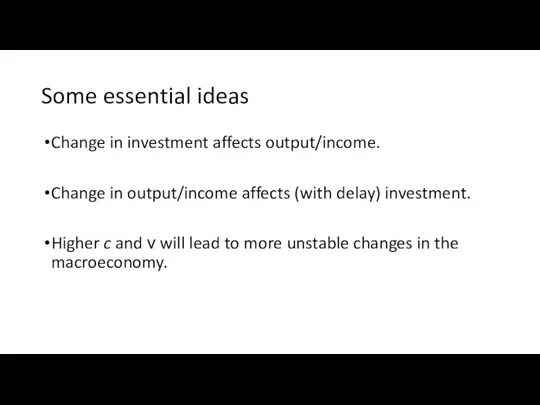


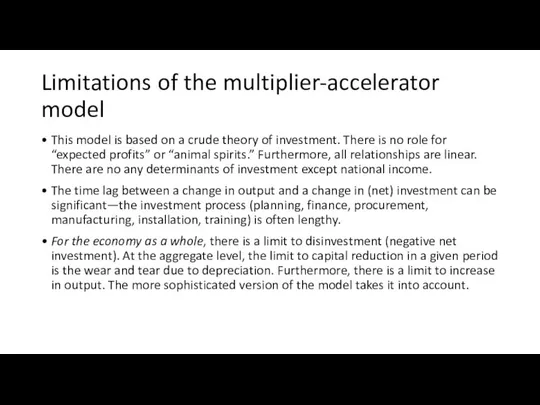
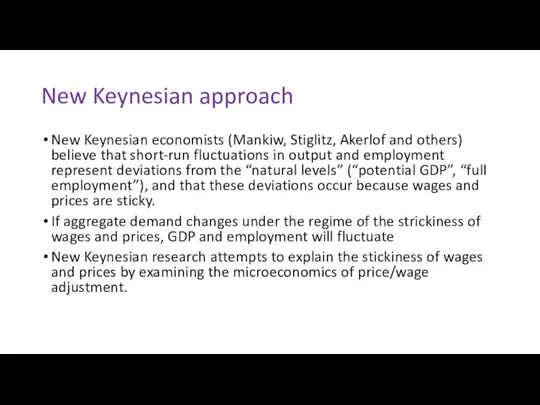
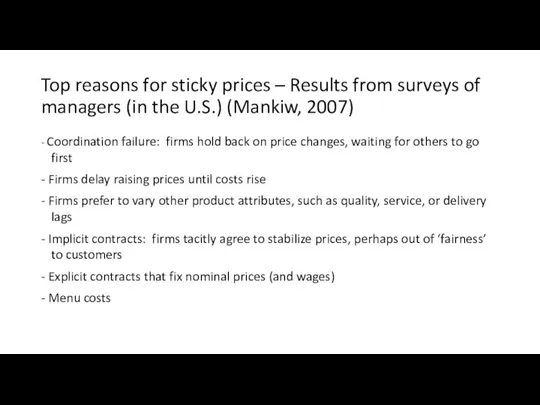
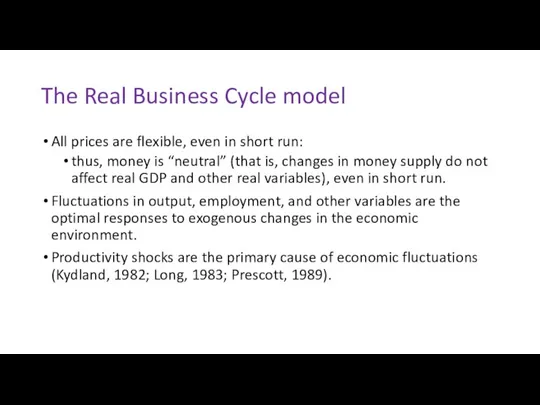
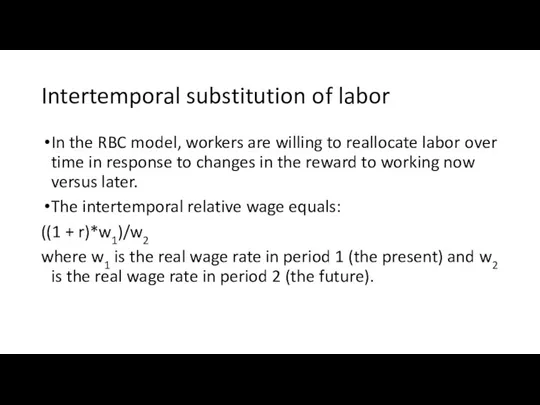
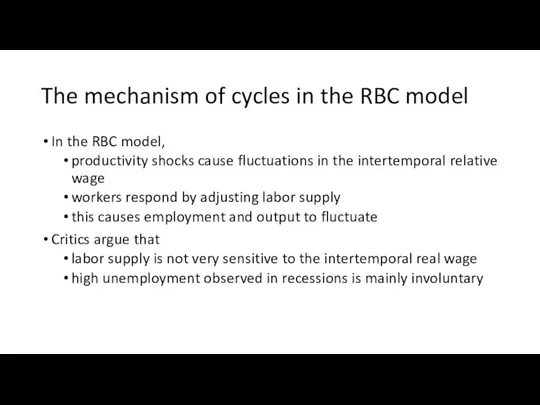
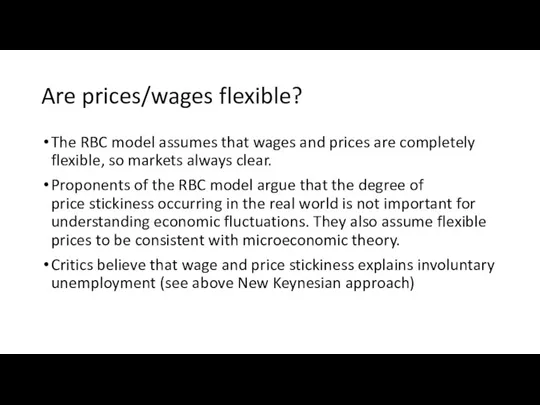
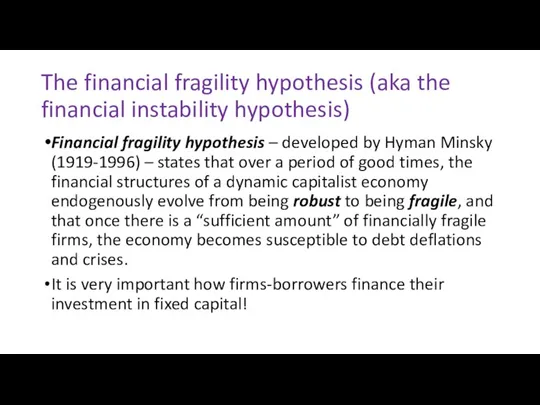
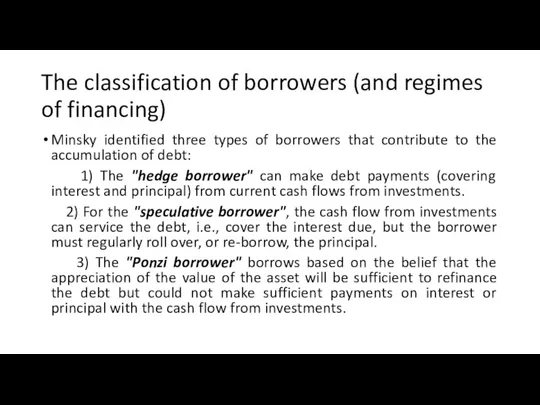
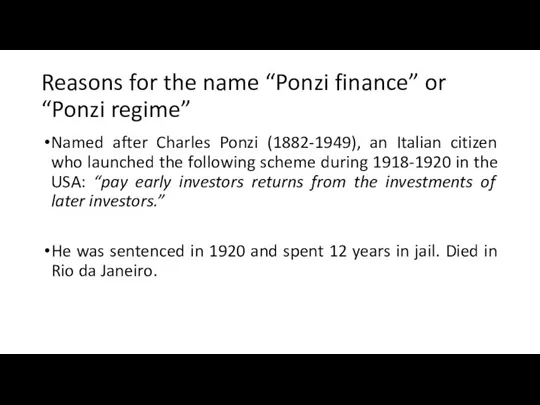
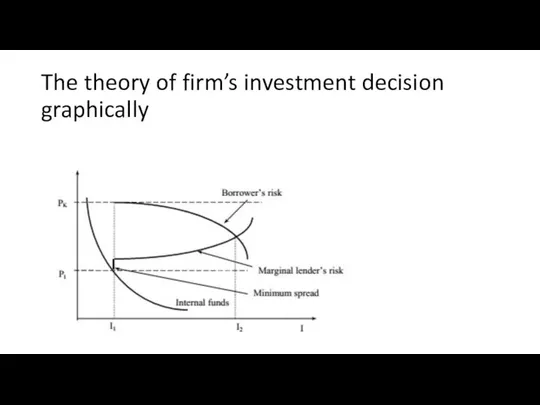
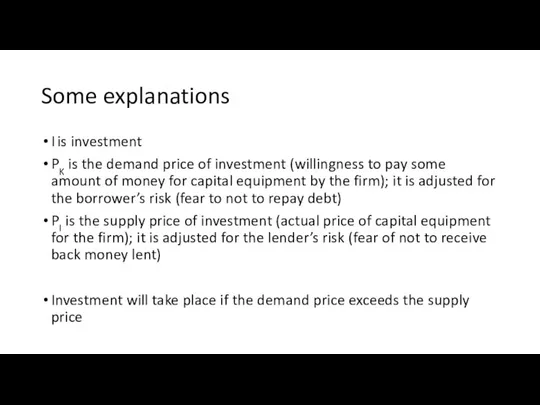
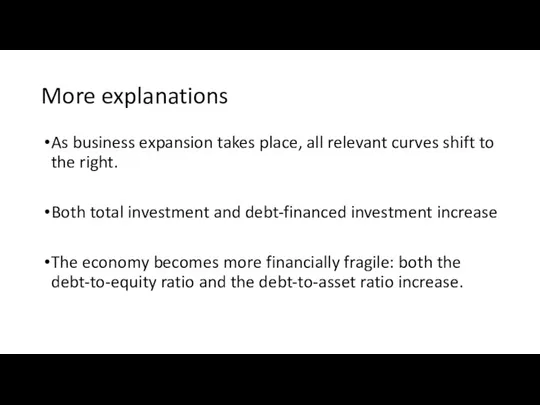
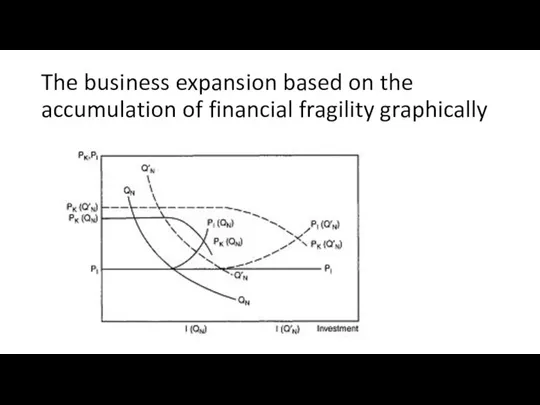
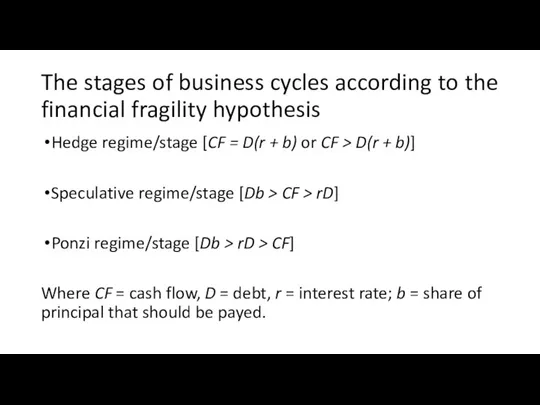
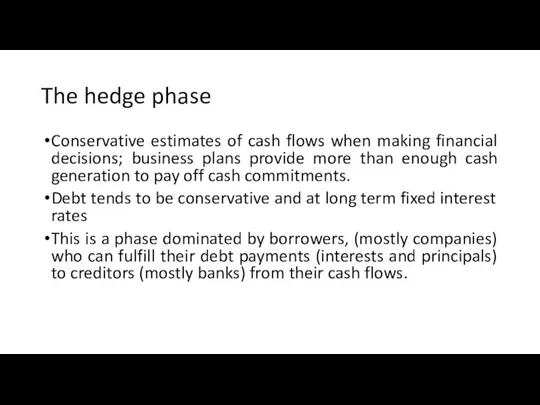
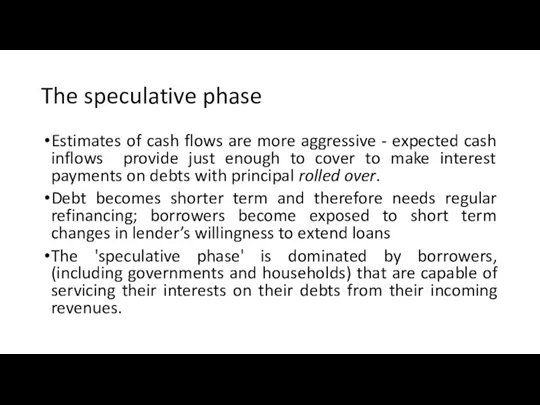
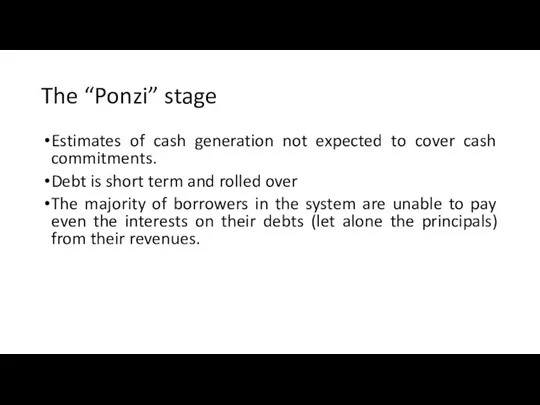
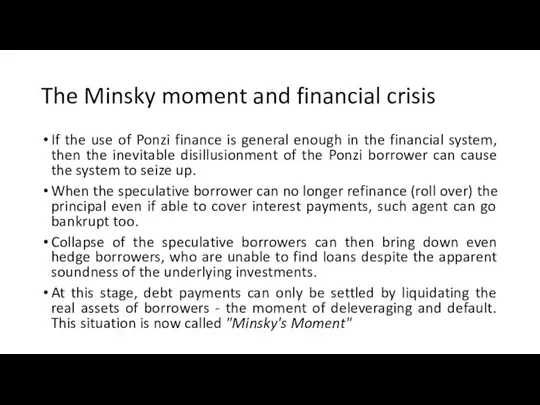
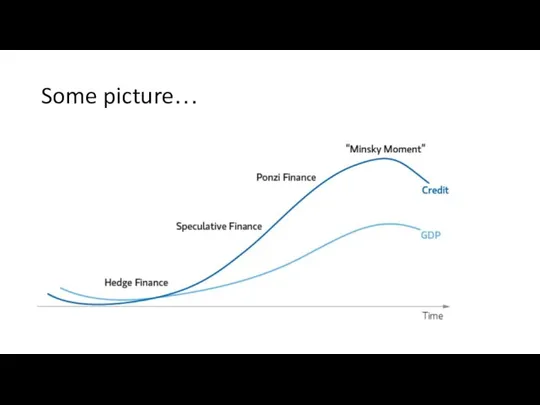
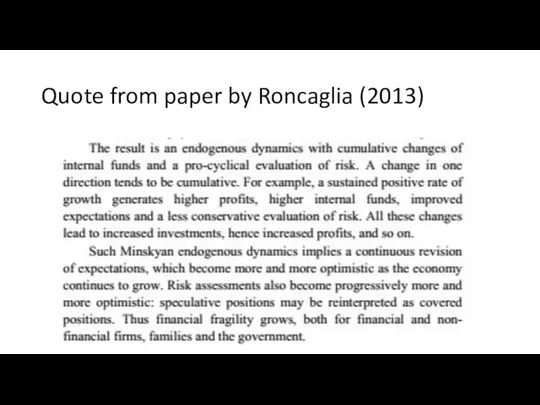
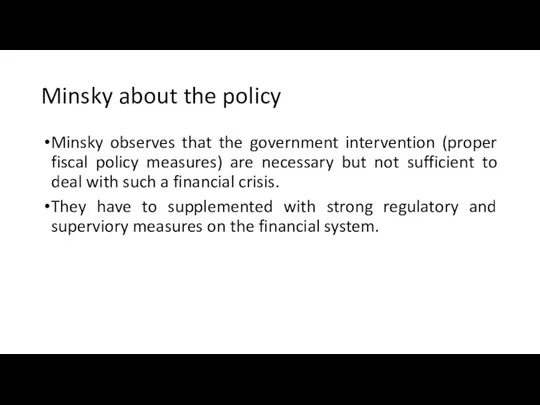
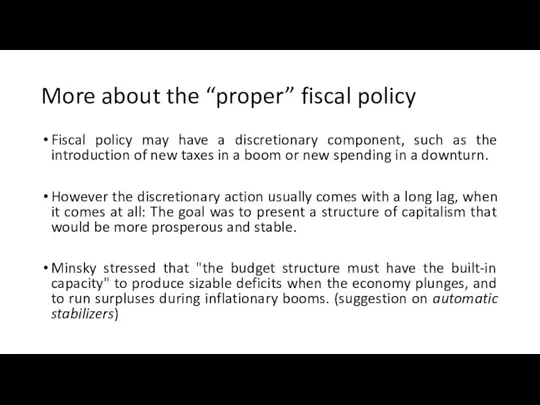
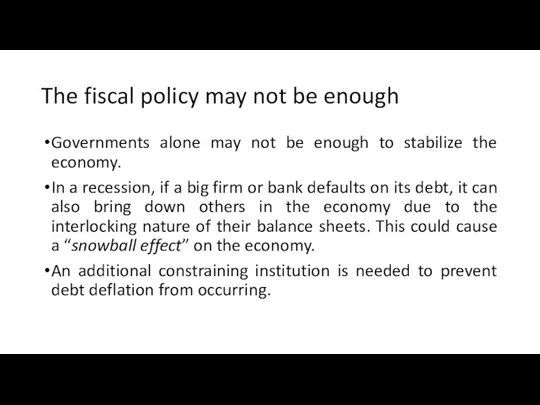
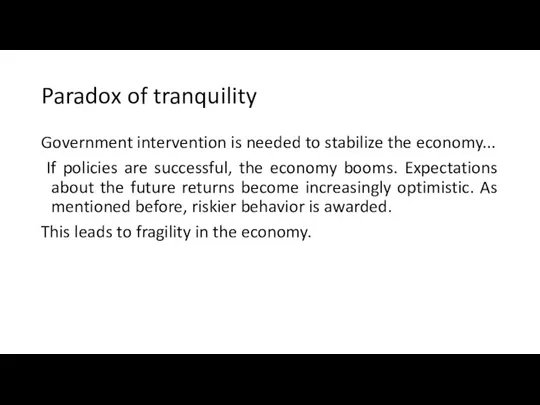
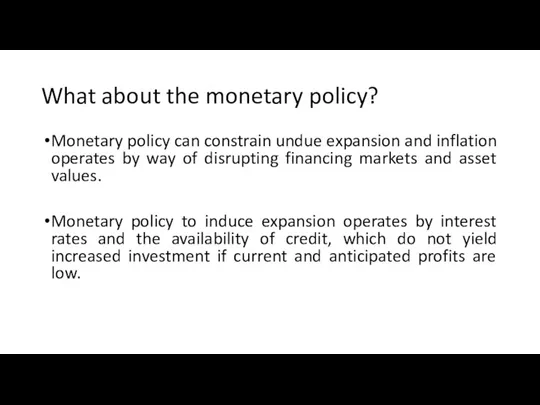
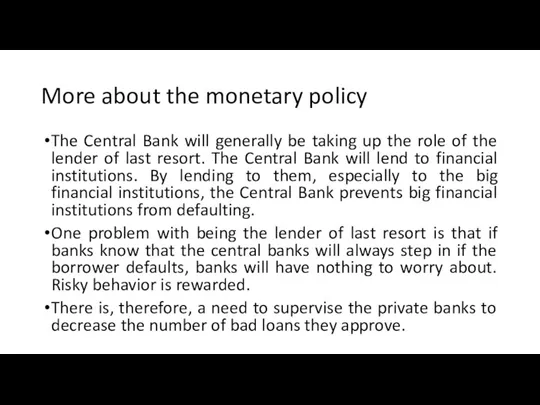
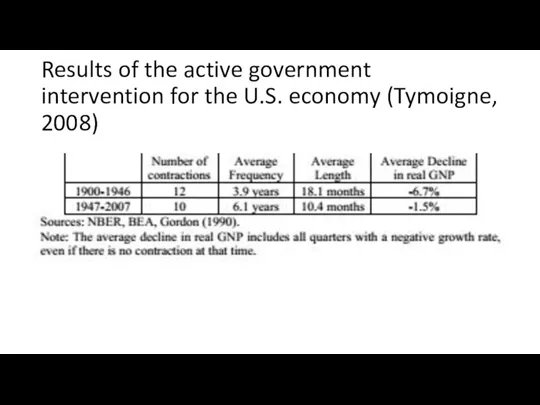
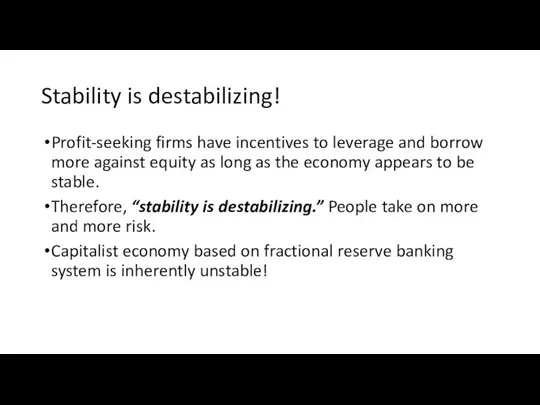
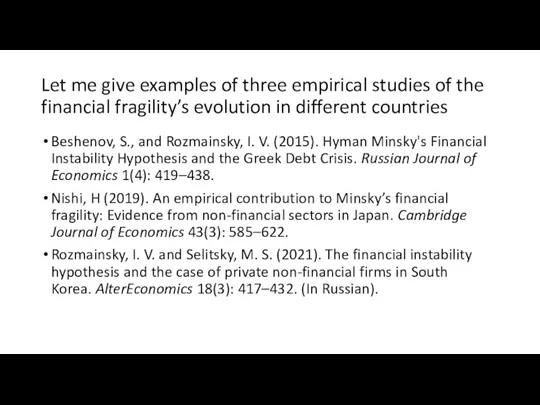
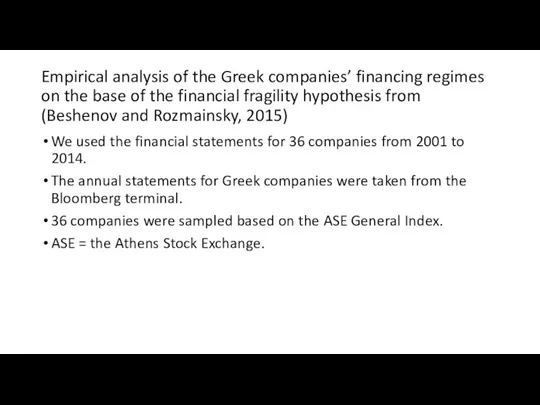
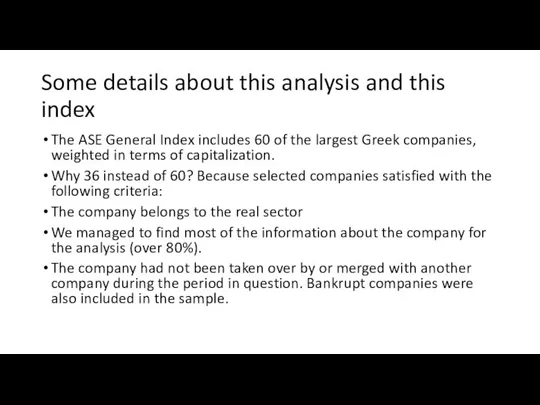
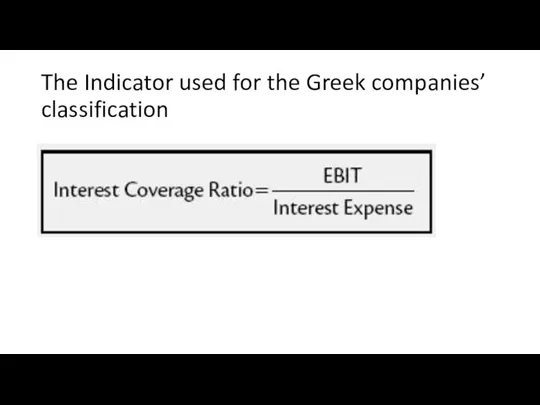
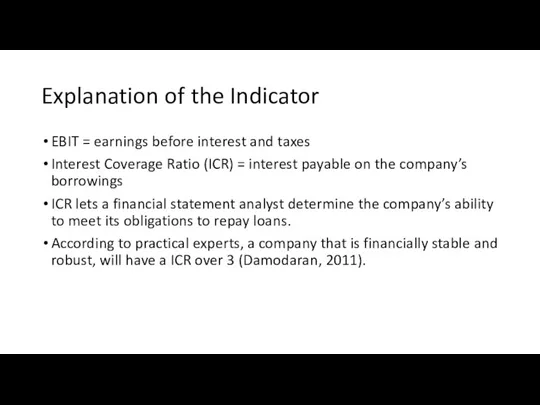
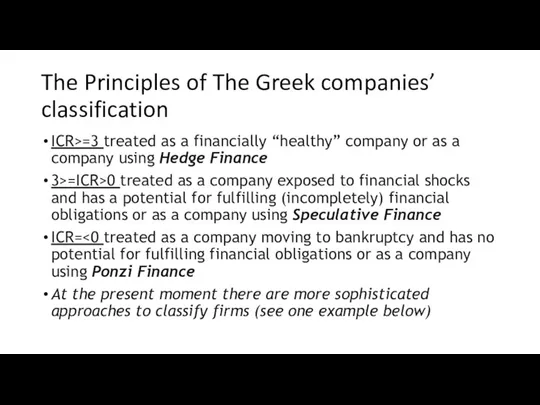
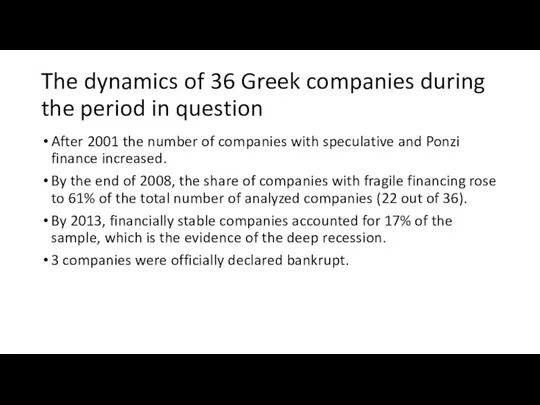
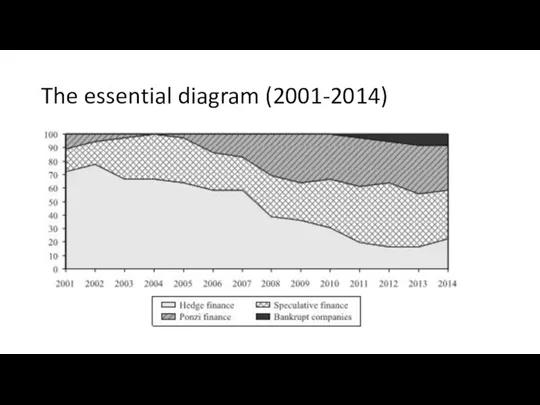
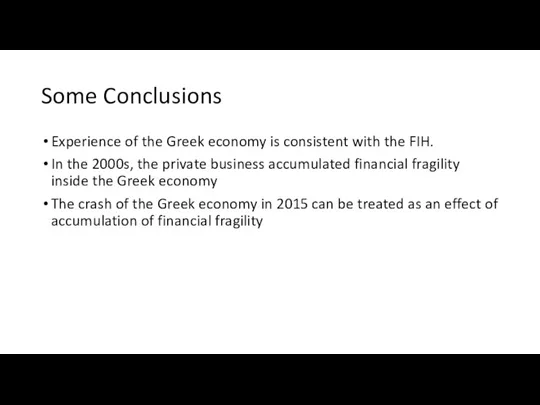
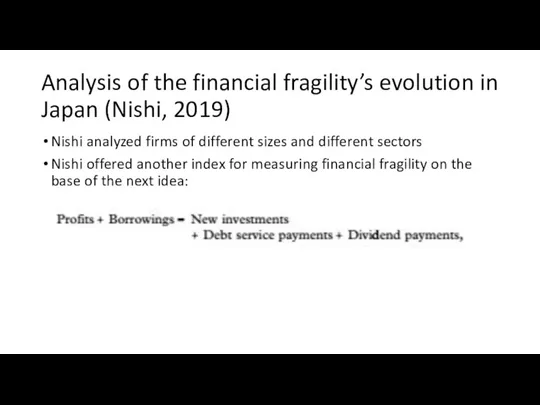
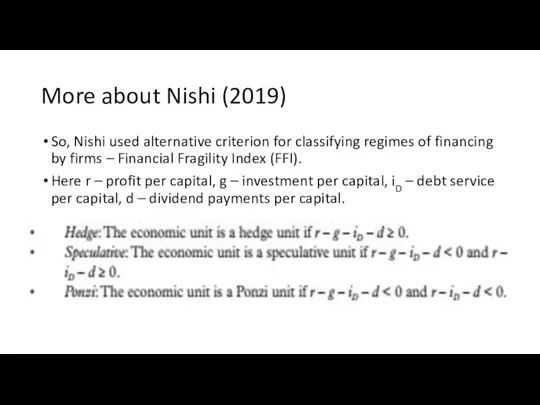
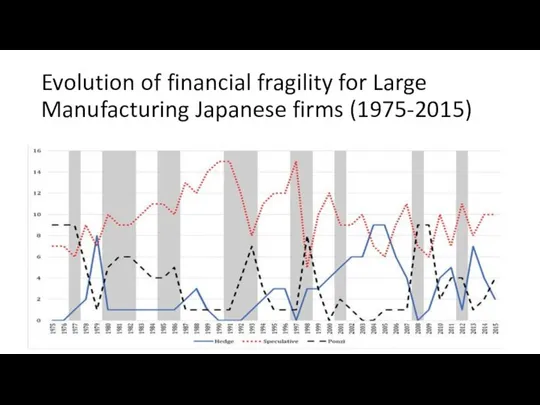
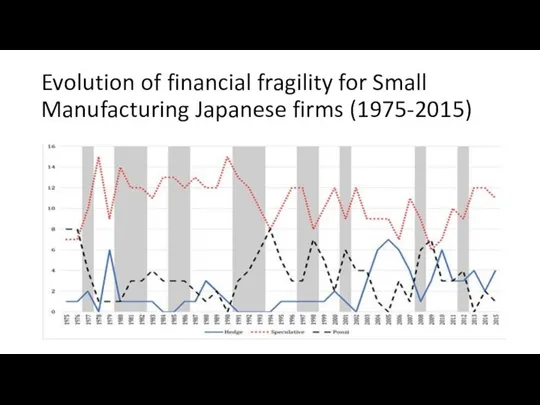
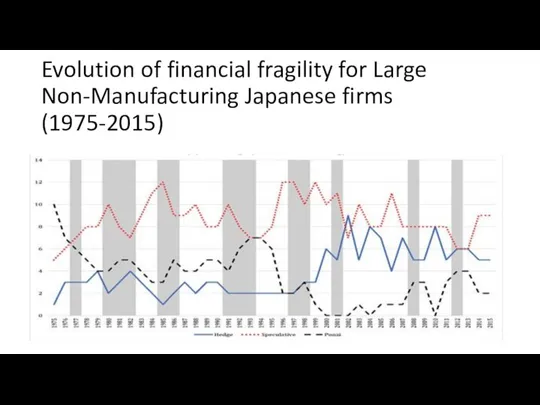
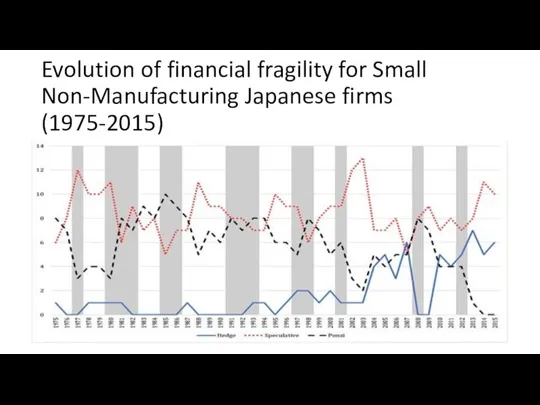
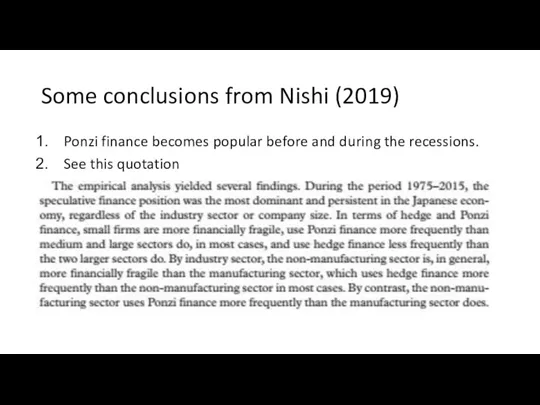
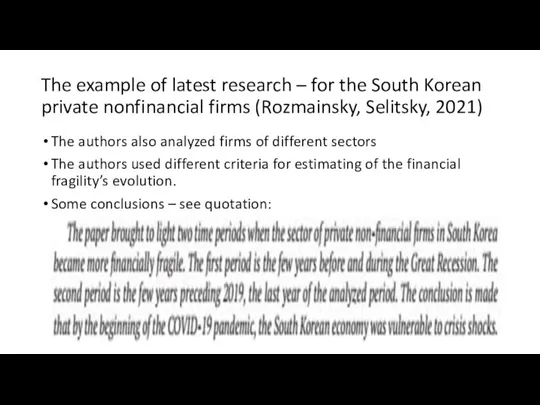
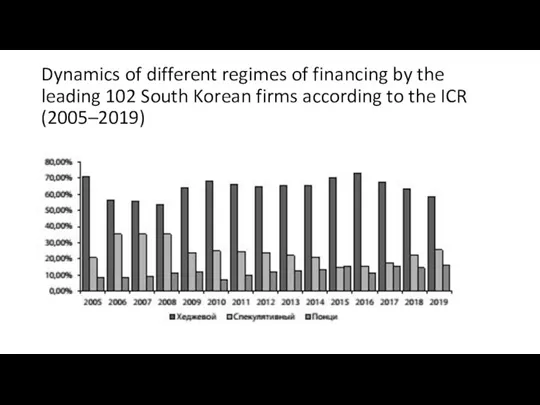
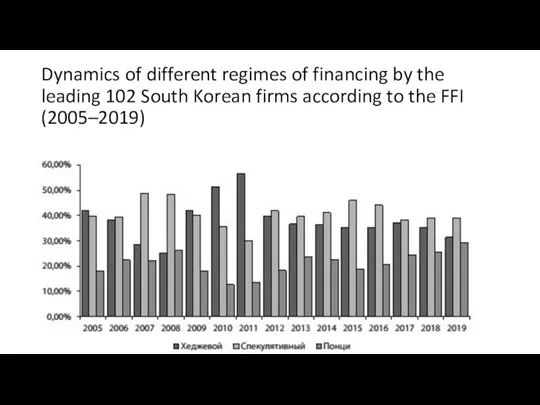
 ТРЕТИЙ МЕЖДУНАРОДНЫЙ ФОРУМ
ТРЕТИЙ МЕЖДУНАРОДНЫЙ ФОРУМ Графика в костюме
Графика в костюме Местный фотограф В.М. Маслов
Местный фотограф В.М. Маслов Проценты и геометрические тела. Обобщение по теме
Проценты и геометрические тела. Обобщение по теме ПРОВЕДЕНИЕ ЭКСПЕРИМЕНТА ПО ВНЕДРЕНИЮ РЕГИОНАЛЬНОЙ ЦИФРОВОЙ СИСТЕМЫ УПРАВЛЕНИЯ ОРГАНИЗАЦИЕЙ ШКОЛЬНОГО ПИТАНИЯ (РЦСУ ШП) (ЭКСПЕРИМ
ПРОВЕДЕНИЕ ЭКСПЕРИМЕНТА ПО ВНЕДРЕНИЮ РЕГИОНАЛЬНОЙ ЦИФРОВОЙ СИСТЕМЫ УПРАВЛЕНИЯ ОРГАНИЗАЦИЕЙ ШКОЛЬНОГО ПИТАНИЯ (РЦСУ ШП) (ЭКСПЕРИМ Особенности развития архитектуры стиля модерн
Особенности развития архитектуры стиля модерн  Роль воспитателя в музыкальном воспитании детей дошкольного возраста
Роль воспитателя в музыкальном воспитании детей дошкольного возраста Войны в Древней Руси
Войны в Древней Руси Дом,где согреваются сердца
Дом,где согреваются сердца Биологические угрозы
Биологические угрозы  Коммуникационный концепт как предмет изучения
Коммуникационный концепт как предмет изучения Композиция
Композиция Где живут эмоции
Где живут эмоции Кинетика нелинейных процессов
Кинетика нелинейных процессов Родители (законные представители)
Родители (законные представители) Воинская обязанность и военный учет
Воинская обязанность и военный учет Организация производственного процесса в холодном цехе
Организация производственного процесса в холодном цехе Викторина по теории литературы
Викторина по теории литературы Тайны русской души
Тайны русской души Организация опытно-экспериментальной деятельности детей 2 – 7 лет
Организация опытно-экспериментальной деятельности детей 2 – 7 лет Республика Кения 7 класс
Республика Кения 7 класс Welcome to Kirillo-Belozersky Monastery
Welcome to Kirillo-Belozersky Monastery Сочинение по картине Левитана «Весна. Большая вода» 4 класс
Сочинение по картине Левитана «Весна. Большая вода» 4 класс Семинар 5. Знакомство с языками программирования
Семинар 5. Знакомство с языками программирования Шаблон презентации
Шаблон презентации Виды и рода вооружённых Сил РФ. Сухопутные войска
Виды и рода вооружённых Сил РФ. Сухопутные войска Резюме в специальности Право и организация социального обеспечения. Пономарева Мария
Резюме в специальности Право и организация социального обеспечения. Пономарева Мария Повторение. Четырёхугольники
Повторение. Четырёхугольники